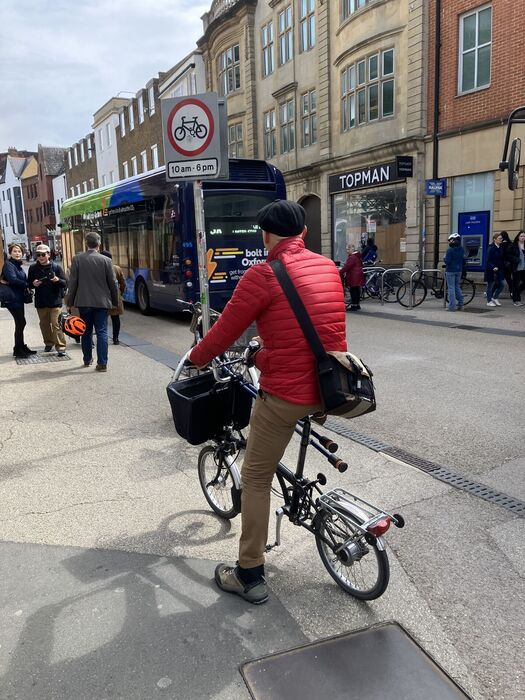The photo shows a friend of mine. He can and does cycle long distances, and he can walk with crutches, but he can't dismount and push his bike. At least half a dozen women, including my sister, have told me that they could comfortably cycle in late pregnancy when they couldn't walk any distance.
And these are just the more visible examples: people can have reduced mobility without any visible sign of that. Another friend says: "Cycling is an important mobility aid for me. I have a very unwell knee and can barely walk because it won't weight-bear. Cycling is fine though as it's not weight-bearing then. Do you really want to make me walk?"
Electric bikes are heavy - 25 to 30kg is not uncommon - and many riders, especially older or frailer ones, can not push them any distance, especially uphill or across kerbs. (Note that in the Netherlands, 65-75 year olds now cycle more than any other 10 year range of adults, most of them using e-bikes.) Some e-bikes have a "walk assist" mode, but this is far from ubiquitous.
Cargo/transport cycles may have loads which are either too heavy or too unwieldy to push. Parents using a cycle to transport small children may not be able to both push the cycle and safely manage those children walking.
All of these kinds of cases together will be quite a small fraction of people cycling (at least until we get Dutch levels of older people cycling). But that is not an excuse for not providing for them, any more than we can give up on providing dropped kerbs at crossings because only a small fraction of people walking and wheeling need them.
In the same way that we need fully inclusive walking and wheeling routes, we need fully inclusive cycling ones. "Cyclist Dismount" signs should not be used at roadworks and alternative rerouting provided (maybe on the carriageway with "Narrow Carriageway, Do Not Overtake Cycles" signs). Cycle routes have to be continuous and not broken up by sections where cycling is prohibited or impossible. And so forth.
For more information, see My Cycle, My Mobility Aid.

